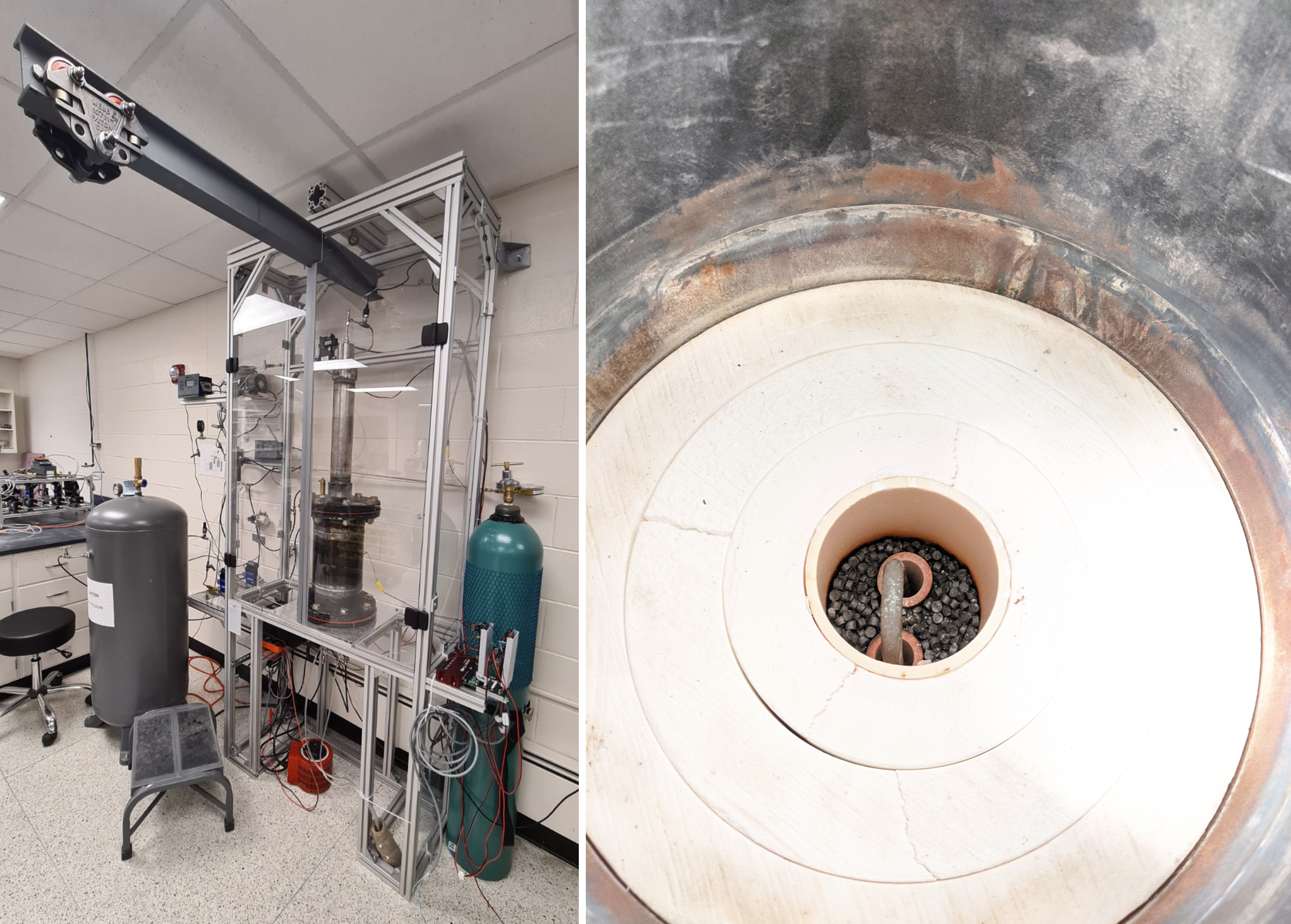(559b) Invited Talk: Grid-Level Thermochemical Energy Storage Using the Magnesium-Manganese-Oxide Redox System
AIChE Annual Meeting
2020
2020 Virtual AIChE Annual Meeting
Sustainable Engineering Forum
Symposium on Solar Power and Chemical Systems in Honor of Prof. Aldo Steinfeld IV
Tuesday, November 17, 2020 - 2:15pm to 2:30pm
Magnesium-Manganese-Oxides are well suited for the current application because 1) they have excellent cyclability: we have demonstrated over 100 redox cycles with less than 4% loss in activity, 2) they are highly stable: we have demonstrated 500h dwell at 1500ËšC and multiple deep cycles between ambient and 1500 ËšC, and 3) they are non-toxic, low-cost, and abundant.
In the current work, we demonstrate Mg-Mn-O thermochemical storage on the bench-scale using a 1 kW/0.1 kWh prototype. The prototype consists of an internally insulated cylindrical steel pressure vessel. A cylindrical, 50 mm diameter packed bed of Mg-Mn-O pellets with an embedded Molybdenum-Disilicide heater is located at the center of the storage unit. The storage unit can be pressurized with air up to 20 bar, it can furthermore operate at reduced pressures down to 0.1 bar. The test system is equipped with flow controllers at the inlets and outlets as well as oxygen sensors at the outlet, enabling closure of the mass and species balance with less than 5% error.
After an initial pressure test, the reactor, filled with 277 g of mostly oxidized Mg-Mn-O pellets, is evacuated to 0.2 bar absolute pressure and it is then heated up. Oxygen evolution due to thermal reduction begins at approximately 1000ËšC, it is most vigorous at temperatures between 1250ËšC and 1500ËšC. Using oxygen sensor and flow sensor derived species balance, the amount of oxygen released during reduction is calculated to be approximately 14g. Subsequently, the reactor is pressurized to 11 bar absolute pressure and the temperature is reduced to 1000ËšC. Once 11 bar has been reached, a constant flow of air through the reactor is maintained to drive oxidation of the bed. The outlet oxygen concentration drops below 15%, indicating that oxidation is ongoing. Once the outlet oxygen concentration reaches 19%, oxidation is considered to be complete and the next cycle is started.
We have performed 5 subsequent cycles with an average duration of 3 hours. The average energy storage density based on the packed bed volume obtained from the measured oxygen exchange is 2300 MJ/m3.
